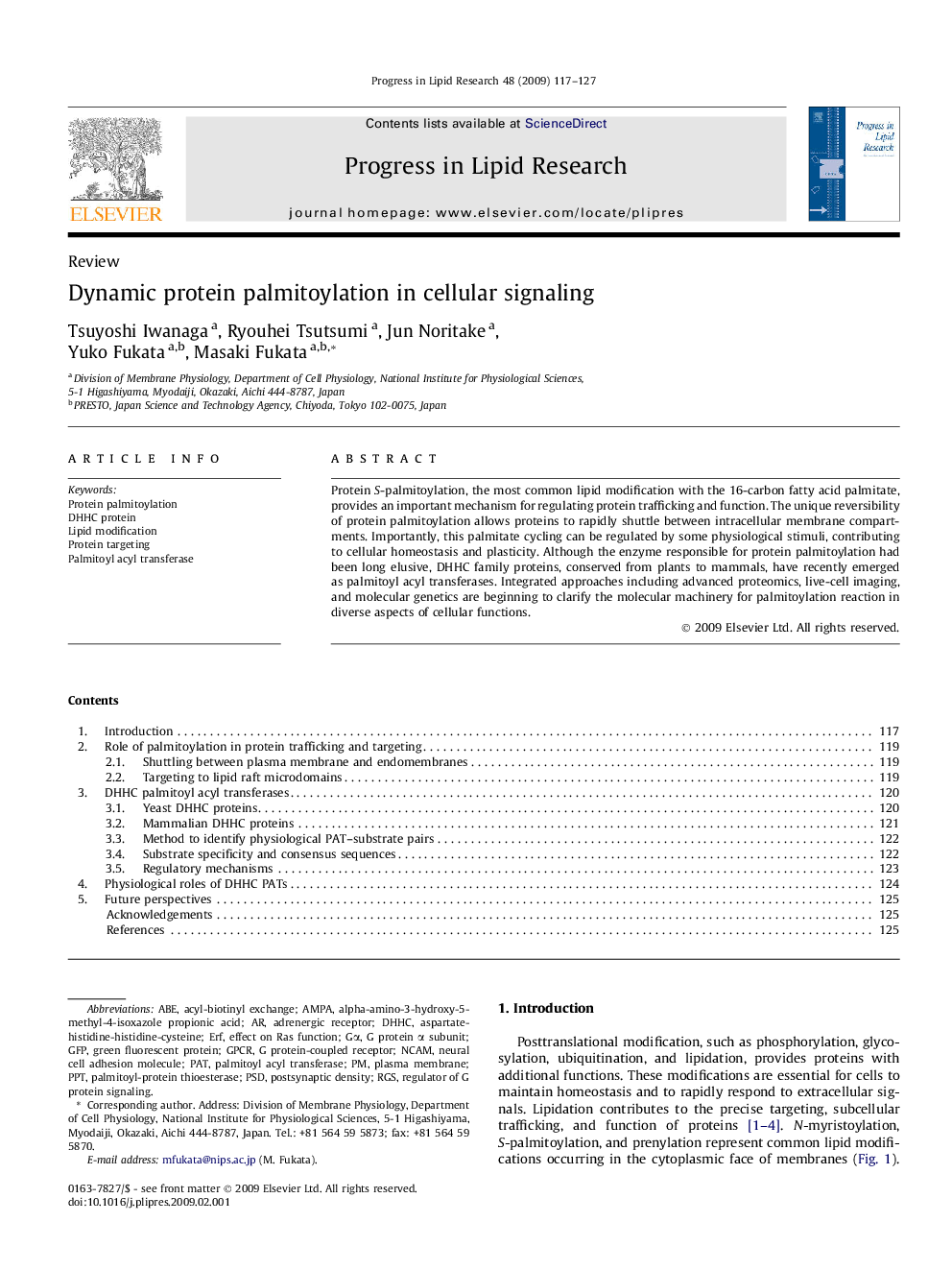| Article ID | Journal | Published Year | Pages | File Type |
|---|---|---|---|---|
| 2019255 | Progress in Lipid Research | 2009 | 11 Pages |
Abstract
Protein S-palmitoylation, the most common lipid modification with the 16-carbon fatty acid palmitate, provides an important mechanism for regulating protein trafficking and function. The unique reversibility of protein palmitoylation allows proteins to rapidly shuttle between intracellular membrane compartments. Importantly, this palmitate cycling can be regulated by some physiological stimuli, contributing to cellular homeostasis and plasticity. Although the enzyme responsible for protein palmitoylation had been long elusive, DHHC family proteins, conserved from plants to mammals, have recently emerged as palmitoyl acyl transferases. Integrated approaches including advanced proteomics, live-cell imaging, and molecular genetics are beginning to clarify the molecular machinery for palmitoylation reaction in diverse aspects of cellular functions.
Keywords
RGSG protein α subunitalpha-amino-3-hydroxy-5-methyl-4-isoxazole propionic acidGαDHHCNCAMABEGPCRPPTPSDERFGFPAMPALipid modificationpostsynaptic densityRegulator of G protein signalingPlasma membraneneural cell adhesion moleculeProtein targetingpatProtein palmitoylationgreen fluorescent proteinPalmitoyl-protein thioesteraseadrenergic receptorG protein-coupled receptor
Related Topics
Life Sciences
Agricultural and Biological Sciences
Food Science
Authors
Tsuyoshi Iwanaga, Ryouhei Tsutsumi, Jun Noritake, Yuko Fukata, Masaki Fukata,
